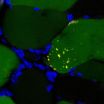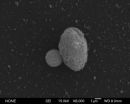(Press-News.org) Humans are unique in their ability to acquire language. But how? A new study published in the Proceeding of the National Academy of Sciences shows that we are in fact born with the basic fundamental knowledge of language, thus shedding light on the age-old linguistic "nature vs. nurture" debate.
THE STUDY
While languages differ from each other in many ways, certain aspects appear to be shared across languages. These aspects might stem from linguistic principles that are active in all human brains. A natural question then arises: are infants born with knowledge of how the human words might sound like? Are infants biased to consider certain sound sequences as more word-like than others? "The results of this new study suggest that, the sound patterns of human languages are the product of an inborn biological instinct, very much like birdsong" said Prof. Iris Berent of Northeastern University in Boston, who co-authored the study with a research team from the International School of Advanced Studies in Italy, headed by Dr. Jacques Mehler. The study's first author is Dr. David Gómez.
BLA, ShBA, LBA
Consider, for instance, the sound-combinations that occur at the beginning of words. While many languages have words that begin by bl (e.g., blando in Italian, blink in English, and blusa in Spanish), few languages have words that begin with lb. Russian is such a language (e.g., lbu, a word related to lob, "forehead"), but even in Russian such words are extremely rare and outnumbered by words starting with bl. Linguists have suggested that such patterns occur because human brains are biased to favor syllables such as bla over lba. In line with this possibility, past experimental research from Dr. Berent's lab has shown that adult speakers display such preferences, even if their native language has no words resembling either bla or lba. But where does this knowledge stem from? Is it due to some universal linguistic principle, or to adults' lifelong experience with listening and producing their native language?
THE EXPERIMENT
These questions motivated our team to look carefully at how young babies perceive different types of words. We used near-infrared spectroscopy, a silent and non-invasive technique that tells us how the oxygenation of the brain cortex (those very first centimeters of gray matter just below the scalp) changes in time, to look at the brain reactions of Italian newborn babies when listening to good and bad word candidates as described above (e.g., blif, lbif).
Working with Italian newborn infants and their families, we observed that newborns react differently to good and bad word candidates, similar to what adults do. Young infants have not learned any words yet, they do not even babble yet, and still they share with us a sense of how words should sound. This finding shows that we are born with the basic, foundational knowledge about the sound pattern of human languages.
It is hard to imagine how differently languages would sound if humans did not share such type of knowledge. We are fortunate that we do, and so our babies can come to the world with the certainty that they will readily recognize the sound patterns of words--no matter the language they will grow up with.
INFORMATION:
Article title: Language universals at birth
Authors: David M. Gómez, Iris Berent, Silvia Benavides-Varela, Ricardo Bion, Luigi Cattarossi, Marina Nespor, & Jacques Mehler
The research leading to these results has received funding from the European Research Council under the European Union's Seventh Framework Programme (FP7/2007-2013) / ERC grant agreement n° 269502 (PASCAL) to Jacques Mehler.
Language structure ... you're born with it
2014-04-09
ELSE PRESS RELEASES FROM THIS DATE:
Lead continues to be a serious threat to California condor populations
2014-04-09
The California condor was one of the first species to be listed under the Endangered Species Preservation Act in 1966 when the population was reduced to a handful of birds. Through a massive collaborative effort that included fieldwork and breeding in zoos, the condor population has grown to more than 400 birds, more than half of which are now free-flying in the wild. Unfortunately, there is overwhelming evidence that lead poisoning from accidental ingestion of spent ammunition is the leading cause of death in the wild population, and this may prevent the establishment ...
Identified a new possible target to combat muscle wasting
2014-04-09
In the study published today in the Journal of Clinical Investigation (JCI), one of the journals with highest impact in experimental medicine, the researchers associate the activity of the DOR protein with muscle atrophy and point to DOR as a plausible target against which to develop a drug to prevent muscle deterioration in certain diseases.
DOR (Diabetes- and Obesity-regulated gene), also known as TP53INP2, is a protein involved in autophagy, a quality control process that ensures cells stay healthy. The researchers have found that increased DOR expression in the muscle ...
UNC researchers show how cancer cells may respond to mechanical force
2014-04-09
April 9, 2014 The push and pull of physical force can cause profound changes in the behavior of a cell. Two studies from researchers working at the UNC Lineberger Comprehensive Cancer Center reveal how cells respond to mechanical manipulation, a key factor in addressing the underlying causes of cancer and other diseases.
The studies, published in Nature Cell Biology and the Journal of Immunology, have their roots in a longtime partnership between the labs of Keith Burridge, PhD, Kenan Professor of Cell Biology and Physiology in the UNC School of Medicine, and Richard ...
Study examines mental health toll exacted on civilians working with military in war zones
2014-04-09
WASHINGTON, DC, April 9, 2014 — The punishing psychological toll endured by military personnel in war zones has been extensively documented for years by researchers, perhaps more than ever in the wake of recent military engagements in Iraq and Afghanistan.
But there has been a troubling dearth of research examining the mental health toll exacted on the large numbers of civilians who work with the military in war zones.
Sociologists Alex Bierman, an assistant professor at the University of Calgary, and Ryan Kelty, an associate professor at Washington College in Maryland, ...
Scientists in Singapore develop novel ultra-fast electrical circuits using light-generated tunneling
2014-04-09
Singapore, 9 April 2014 – Assistant Professor Christian A. Nijhuis of the Department of Chemistry at the National University of Singapore's (NUS) Faculty of Science, in collaboration with researchers from the Agency for Science, Technology and Research (A*STAR), namely Dr Bai Ping of the Institute of High Performance Computing and Dr Michel Bosman of the Institute of Materials Research and Engineering has successfully designed and fabricated electrical circuits that can operate at hundreds of terahertz frequencies, which is tens of thousands times faster than today's state-of-the-art ...
Physical function and sense of autonomy determine life-space mobility in older people
2014-04-09
Physical function and sense of autonomy are independent determinants of life-space mobility in older people. This was found in a study conducted at the Gerontology Research Center of the University of Jyväskylä. In this project, 848 older men and women that lived independently in the Jyväskylä region in Central Finland were interviewed at their own home.
Life-space mobility reflects a person's mobility with or without the use of a vehicle. Life-space mobility reflects an individual's opportunities to participate in the society. An individual's life-space may be restricted ...
Technical tests of biodiversity
2014-04-09
What happens when physicists play (using mathematical instruments) with the genetics of populations? They may discover unexpected connections between migration and biodiversity, for example, as recently done by a group of researchers from the International School for Advanced Studies (SISSA) in Trieste and the Polytechnic University in Turin in a study published in the journal Physical Review Letters.
The effect of migration on biodiversity (intended as the coexistence of different genetic traits) is an open question: does migration increase or decrease the genetic variability ...
Brain size influences development of individual cranial bones
2014-04-09
VIDEO:
This shows skull and skeletal development of a 25-year-old musk shrew embryo.
Click here for more information.
Embryonic development in animals – except mice and rats – remains largely unexplored. For a research project at the University of Zurich, the embryos of 134 species of animal were studied non-invasively for the first time using microcomputer imaging, thus yielding globally unique data. The embryos studied came from museum collections all over the world. The international ...
USA top in the world for entrepreneurship
2014-04-09
The USA is the most entrepreneurial economy in the world, according to the 2014 Global Entrepreneurship and Development Index (GEDI). (See Notes to Editors for the complete rankings.)
The GEDI index combines data on entrepreneurial activities and aspirations with data describing how well the country supports entrepreneurial activity in the US and 119 other countries across the world.
The USA came top, followed by Australia and Sweden in second and third place, respectively.
The researchers found that the USA is a world leader when it comes to financing new businesses ...
Researchers say Neanderthals were no strangers to good parenting
2014-04-09
Archaeologists at the University of York are challenging the traditional view that Neanderthal childhood was difficult, short and dangerous.
A research team from PALAEO (Centre for Human Palaeoecology and Evolutionary Origins) and the Department of Archaeology at York offer a new and distinctive perspective which suggests that Neanderthal children experienced strong emotional attachments with their immediate social group, used play to develop skills and played a significant role in their society.
The traditional perception of the toughness of Neanderthal childhood is ...



